Forums
- Forums
- Duggy's Reference Hangar
- USAAF / USN Library
- Sikorsky R-4
Sikorsky R-4
Post a reply
- Go to Previous topic
- Go to Next topic
- Go to Welcome
- Go to Introduce Yourself
- Go to General Discussion
- Go to Screenshots, Images and Videos
- Go to Off topic
- Go to Works in Progress
- Go to Skinning Tips / Tutorials
- Go to Skin Requests
- Go to IJAAF Library
- Go to Luftwaffe Library
- Go to RAF Library
- Go to USAAF / USN Library
- Go to Misc Library
- Go to The Ops Room
- Go to Made in Germany
- Go to Campaigns and Missions
- Go to Works in Progress
- Go to Juri's Air-Raid Shelter
- Go to Campaigns and Missions
- Go to Works in Progress
- Go to Skinpacks
- Go to External Projects Discussion
- Go to Books & Resources
-
13 years agoSat Nov 21 2020, 01:51pm
 Main AdminSikorsky R-4 Helicopter
Main AdminSikorsky R-4 Helicopter
On October 31, 1938, a few months after United Aircraft had authorized design work on helicopters, representatives from the Materiel Division visited Sikorsky for the purpose of investigating helicopter development. Nothing resulted from this visit nor from a helicopter development proposal submitted on May 28, 1940, when Igor Sikorsky visited the Materiel Division at Wright Field, Ohio, and showed moving pictures of early VS-300 tests.
Sikorsky VS-300Better luck attended a visit by Materiel Division representatives to the manufacturer's plant in Stratford, Connecticut, in July 1940 as Captain H Franklin Gregory became the first military pilot to fly the VS-300. Moreover, on the 19th of that month the War Department used $3,000 from the Dorsey Bill to purchase engineering data on the Vought-Sikorsky VS-3II a proposed derivative of the VS-300. Less than one month later, on August 14, Sikorsky submitted a proposal to build a VS-316 prototype for $50,000. On August 30, the Chief of the Materiel Division was requested to grant authority for purchase of this helicopter from unexpended Dorsey Bill funds.
While the Air Corps was interested in procuring a Sikorsky helicopter under the provision of the Dorsey Bill, the Judge Advocate General decided that all of the Government agencies interested in this development, not just the Air Corps, had to approve this procurement.
Accordingly, during a meeting held in Washington in December 1940, representatives of various agencies reviewed the Sikorsky proposal to build an observation/training helicopter and, agreeing that its acceptance would be an excellent opportunity to obtain a worthwhile development at a reasonable cost, unanimously recommended that the Air Corps negotiate a contract with Sikorsky for one experimental model.
Inspection of the mock-up of the VS-316 on April 16, 1941, by Frank Gregory, now a Major, resulted in several changes to give better visibility and to make various instruments more accessible to the crew.
At that time, it was estimated that the prototype, which received the military designation XR-4 and the serial 41-18874, would fly in August 1941. However, experience gained during trials with the VS-300 led to a redesign of the tail rotor installation and completion of the XR-4 was delayed while Sikorsky experimented with revised tail rotor installations.
While the XR-4 was being completed to this configuration, further trials with the VS-300 prompted Sikorsky to conclude that the remaining horizontal rotor could also be removed and cyclic control transferred to the main rotor. As this revised configuration proved successful when the experimental helicopter, now designated VS-300A, was returned to flight status on December 8, 1941, the AAF agreed that the XR-4 was to be similarly modified as soon as possible.
Initial trials:
Completed at the end of 1941 and powered by a 175 hp Warner R-500-3 radial engine driving a three-bladed main rotor, a three-bladed horizontal tail rotor, and a two-bladed anti-torque rotor, the XR-4 was first flown by Charles 'Les' Morris at Stratford on January 14, 1942. On that day, six flights were made, the longest of which lasted just over 7 min. Following some minor modifications, the designation was changed to VS-316A and the contract price increased from $40,000 to $50,000.
With America now in the war and light observation aircraft ('grasshoppers') about to be included in the TO&E (Table of Organisation and Equipment) of Army Ground Force units, the Army Air Forces arranged to evaluate the XR-4 at Wright Field. After demonstrating at Stratford on April 20, 1941, that it could fly backwards, climb vertically to 500ft, hover 100ft above the ground, fly at a top speed of 70kt, and reach an altitude of 5,000ft, the XR-4 flew to Wright Field under its own power, flying the 761 miles in l6hr 10min without encountering any significant problems.
e first flight was made on January 14, 1942. Many subsequent experiments included adding fabric covering to determine what effect this additional surface would have on the control of the aircraft. The XR-4's design was simple, featuring tubular construction, a boxlike cabin with side-by-side seating for a crew of two, and full dual controls.
Between May 30, 1942, and January 4, 1943, during the flight test program at Wright Field, the XR-4 set six unofficial records by flying at a top speed of 80 mph, reaching an altitude of 9,200ft with a crew of two and 12,000ft with a crew of one, covering a distance of 112 miles and climbing at 770 ft/min at a gross weight of 2,4001b.
Returned to the contractor in January 1943, the XR-4 was modified to YR-4A standard by the installation of a 200hp Warner R-550-1 radial and increasing the main rotor diameter from 36ft to 38ft.
Service testing the YR-4A and YR-4B:
Sikorsky was requested to submit quotations for a service test batch of 13 YR-4As, plus two to be supplied to Great Britain.. Procurement authority was granted on April 30, 1942, and the 15 YR-4As, were ordered via a letter contract finally approved on January 15, 1943.
These machines differed from the XR-4 in having the slightly more powerful R-550-I, a main rotor of increased diameter, and fuel tank capacity increased from 25 to 30 US gal. Design gross weight was to be increased from 2,400 to 2,535lb.
Subsequently, the contract was thrice amended, first to add an additional 15 helicopters for the US Navy and the UK, then to have the airframe originally ordered for static test completed as a special test article, and finally, to have Sikorsky complete all but the first three as YR-4Bs with provision for the installation of bomb racks (for three 100lb or one 325 lb bombs) or a litter container on the port side.
Making its first flight on May 3, 1943, the first YR-4A was flown to Fort Monmouth, New Jersey, for Signal Corps demonstration and then to Washington, DC, to take part in an air mail anniversary celebration, and to be demonstrated to President Roosevelt. In July 1943, after being fitted with low-pressure rubberized floats, it was used for tests aboard the US Army Transport James Parker anchored in Long Island Sound.
The first helicopter combat rescue:
Organized in early.1944 as part of 'Project 9' to provide air support for Brig Orde Wingate's Long Range Penetration Group operating behind enemy lines in Burma, the American 5138th Air Unit was redesignated the First Commando Force and was initially composed of a fighter section with P-51As, a bomber section with B-25Hs. a transport section with C-47As, a glider section with CG-4As and TG-5s, and a liaison section with L-1As, L-5Bs, and YR-4Bs. Until the Japanese surrender, the 1st ACO operated with conspicuous success from Hailakandi and Assandol in India and from forward bases in Burma'.
The four Sikorsky YR-48s were airlifted to India aboard Curtiss C-46 Commandos, one being destroyed in the crash of a C-46 and a replacement being forwarded immediately. Soon after being reassembled at Hailakandi, two were destroyed in accidents while flown by a pilot who had already survived two crashes in fixed wing aircraft, leaving two for operational evaluation. One of these primitive helicopters, known as Eggbeaters' to the servicemen, was used by Lt Carter Harman to make a daring rescue deep behind enemy lines.
This combat rescue, the first ever made by a helicopter, was undertaken after a Vultee L-1B carrying three wounded British soldiers had come down some 100 miles behind enemy lines in Burma after being hit by ground fire on April 21, 1944. As the closest Allied base was the Aberdeen glider airstrip and with dense jungle and Japanese troops nearby, a ground rescue attempt or the use of fixed-wing rescue aircraft was considered impractical. It was therefore decided to use one of the untried YR-4Bs.
To conduct the attempt, the two-seat helicopter was ferried from its base at Lalaghat to a forward base at Taro and on to Aberdeen along a circuitous 500-mile route, most of which was over Japanese occupied territory. Refueling stops were made every 100 miles or so at locations controlled by Wingate's raiders. Finally, on April 25, three days after the L-1B had been forced down, Lt Harman flew his YR-4B from Aberdeen to a clearing near the crash site, a distance of approximately 60 miles, and picked up the first of the British wounded.
With his YR-4B struggling in the heat to get airborne with the added weight, Harman made it to an emergency strip prepared by British commandos on a sandbar ten miles away. There the wounded soldier was transferred to a Stinson L-5B which had brought fuel for the helicopter.
Harman then returned to the clearing and brought back another wounded soldier but an overheating engine forced him to remain overnight on the sandbar. The next morning, he went back for the third British soldier and later in the morning had what appeared to be a narrow escape as he picked up the pilot. However, the 'threatening troops' seen by Lt Harman turned out to be members of a Chindit rescue party which had made its way overland to come to the rescue of the downed flyers.
Before succumbing to lack of spare parts and harsh weather in the Burmese jungle, the last two YR-4Bs of the 1st Air Commando Group were credited with a total of 15 successful evacuations.
It was also used too retrieve parts from downed aircraft, mainly cockpit clocks etc.
Once a downed aircraft had been located its wing would be marked with a large X .
While the R-4 was being used for rescues in Burma and China, it was also being used to ferry parts between floating Aviation Repair Units in the South Pacific. On 23 May 1944, six ships set sail with two R-4s on board each vessel. The ships had been configured as floating repair depots for damaged Army Air Force airplanes in the South Pacific. When the helicopters were not being used to fly the parts from one location to another, they were enlisted for MEDEVAC and other mercy missions.
In Royal Air Force service, the R-4 was called the Hoverfly. The Helicopter Training School, formed January 1945, at RAF Andover, was the first British military unit to be equipped with the helicopter.
Below a great video
http://www.youtube.com/watch?v=o3o1SFeLJTY
Enjoy the Photos.
The man himself "Igor Sikorsky" in an early hoist test.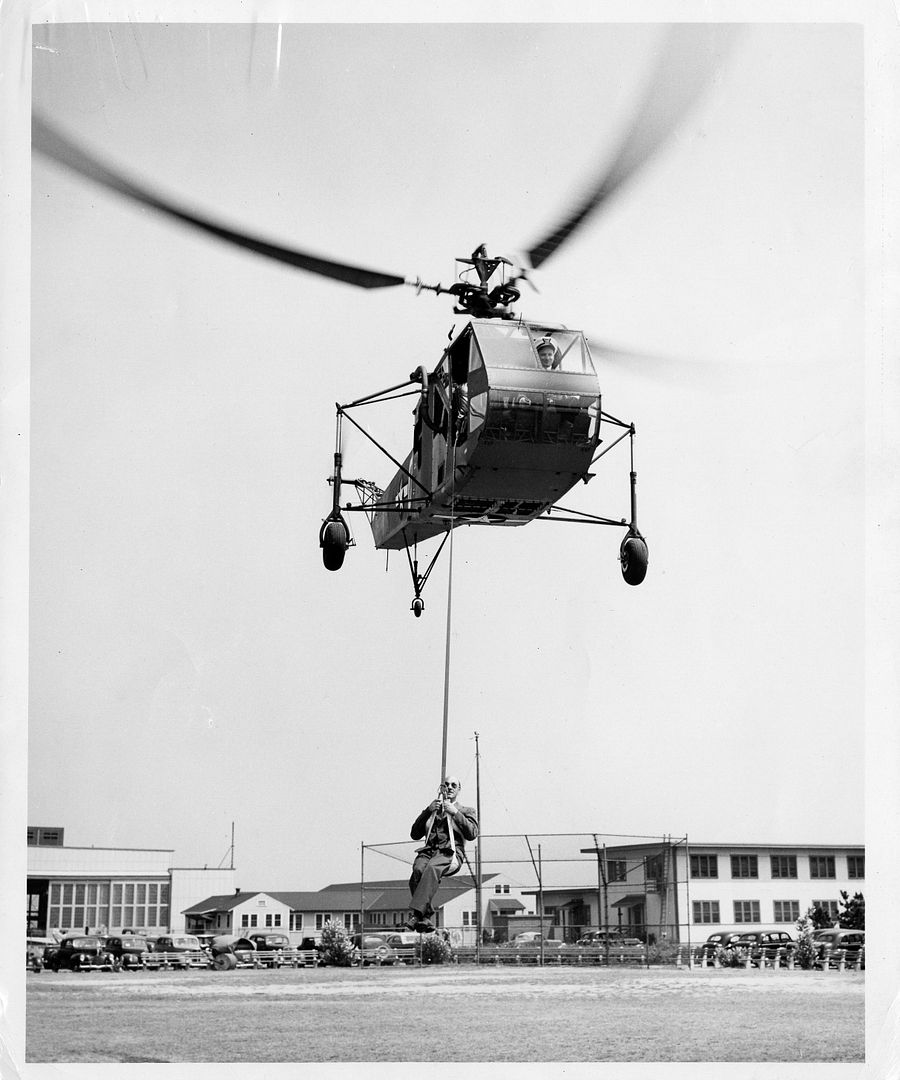
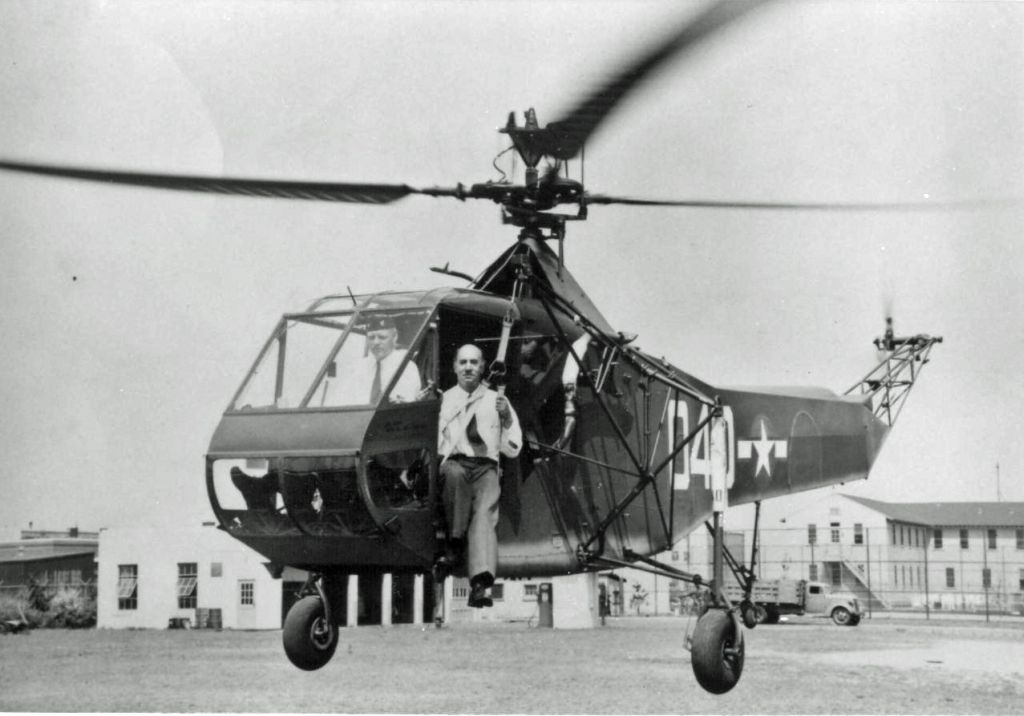
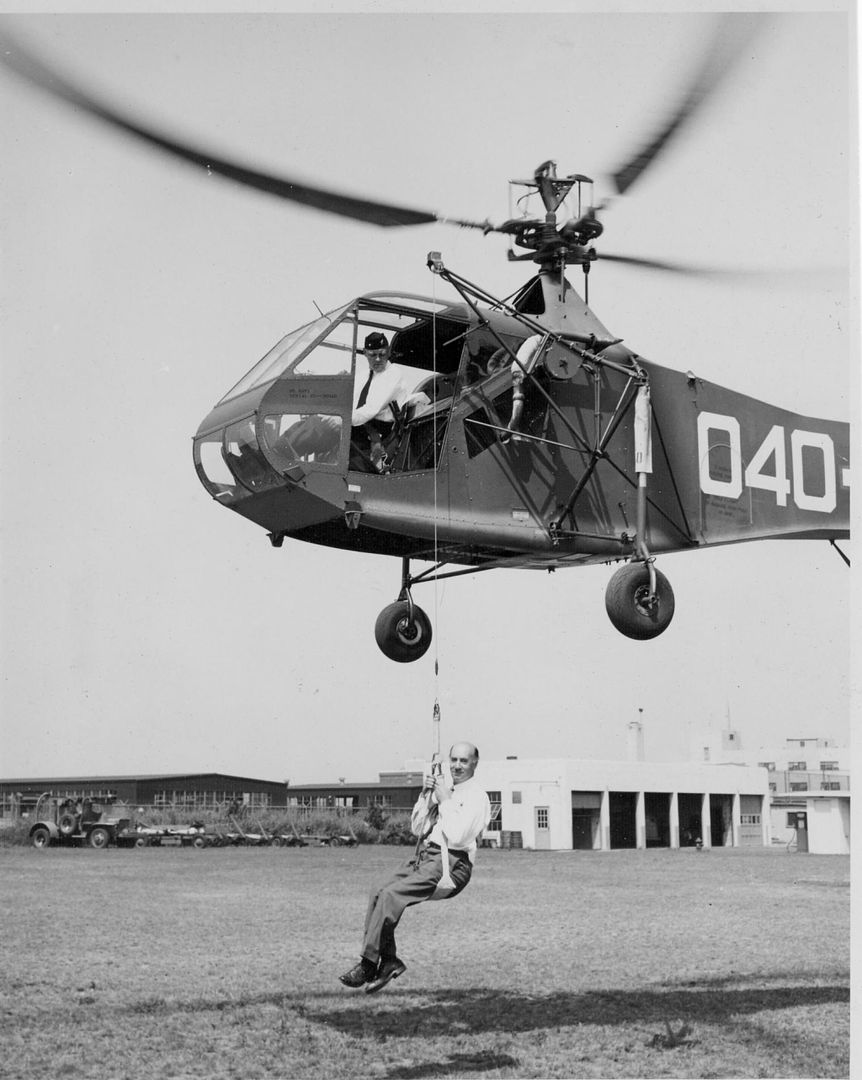
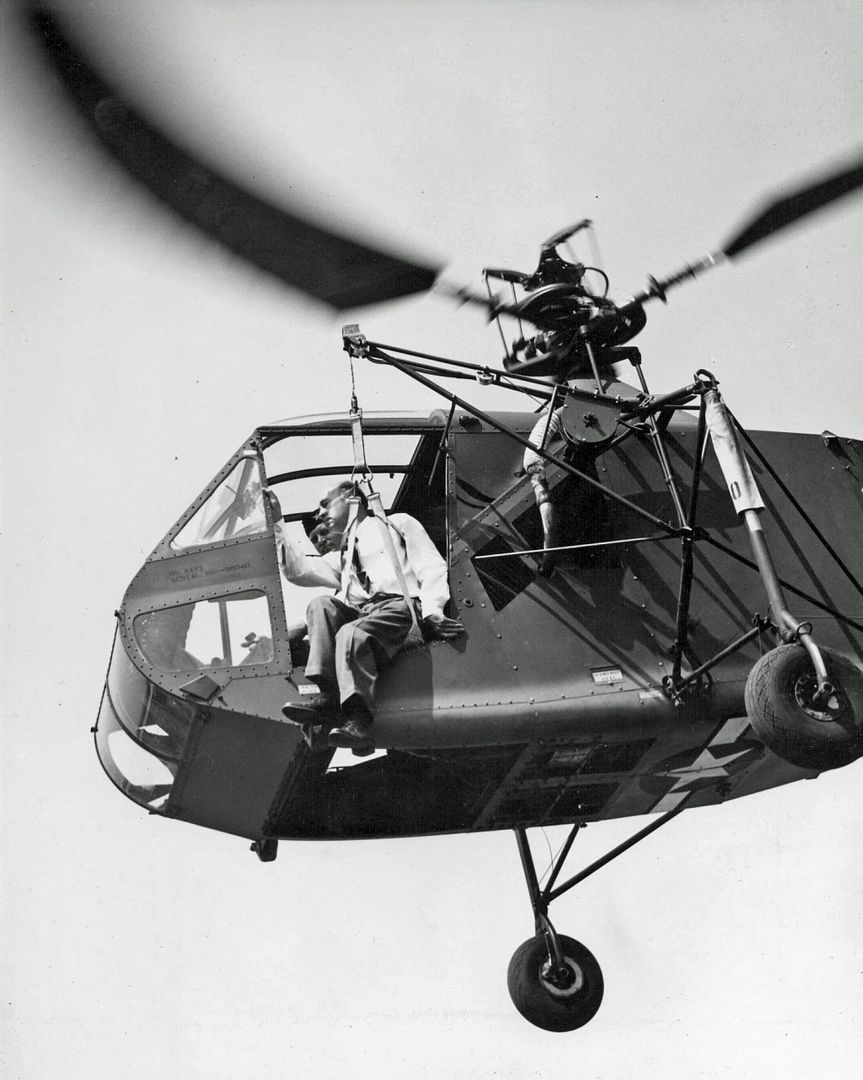
An early US Coastguard R-4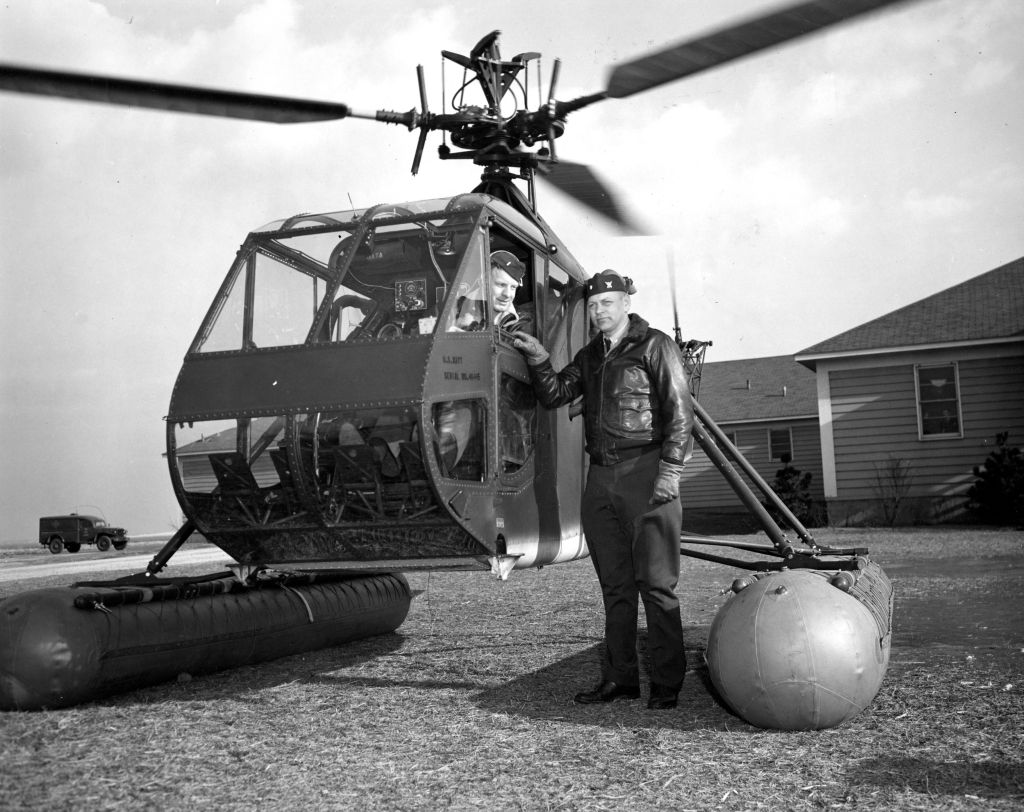
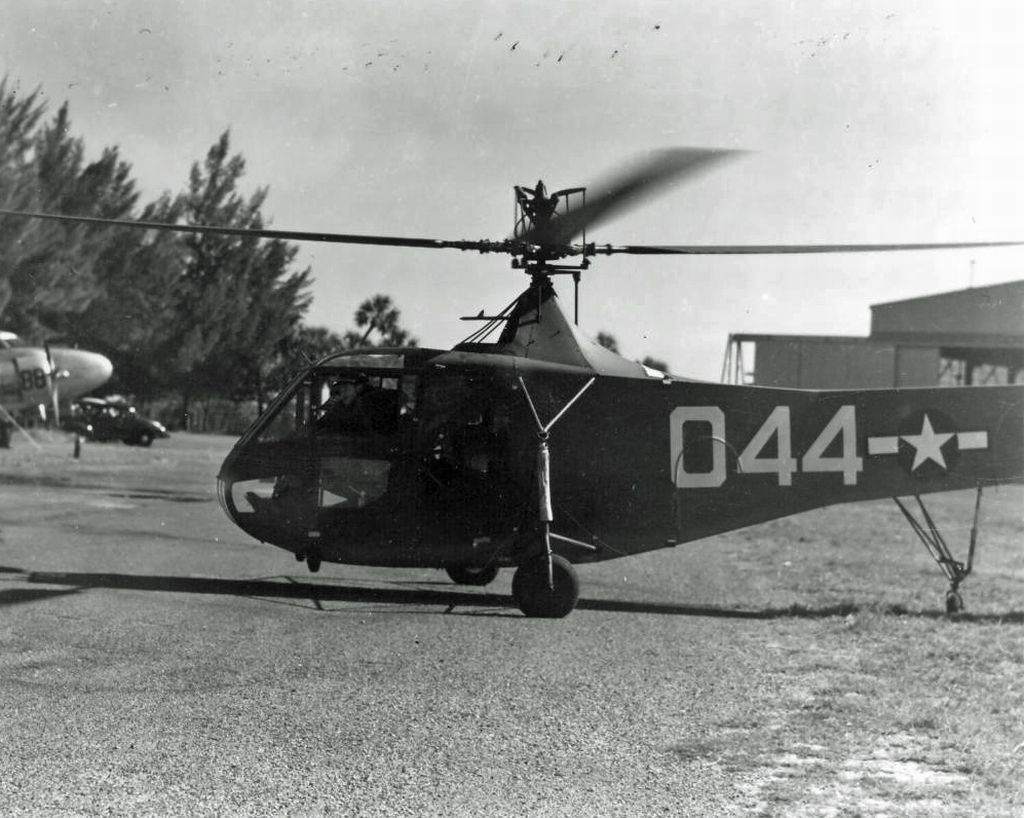
Burma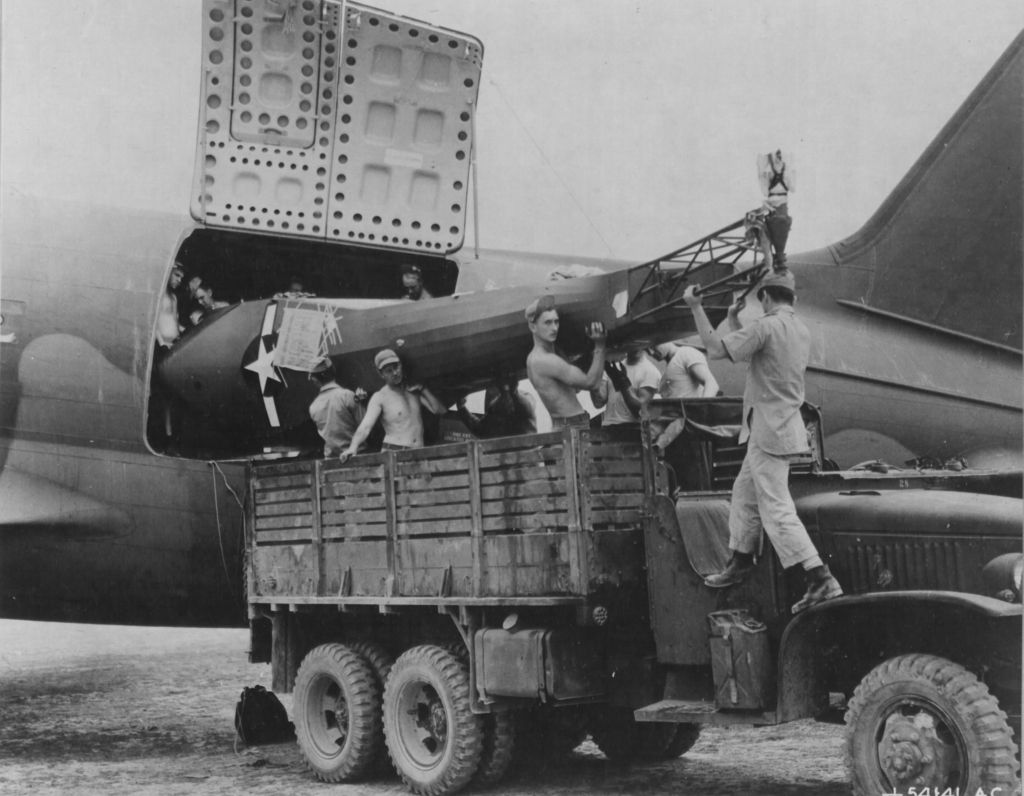
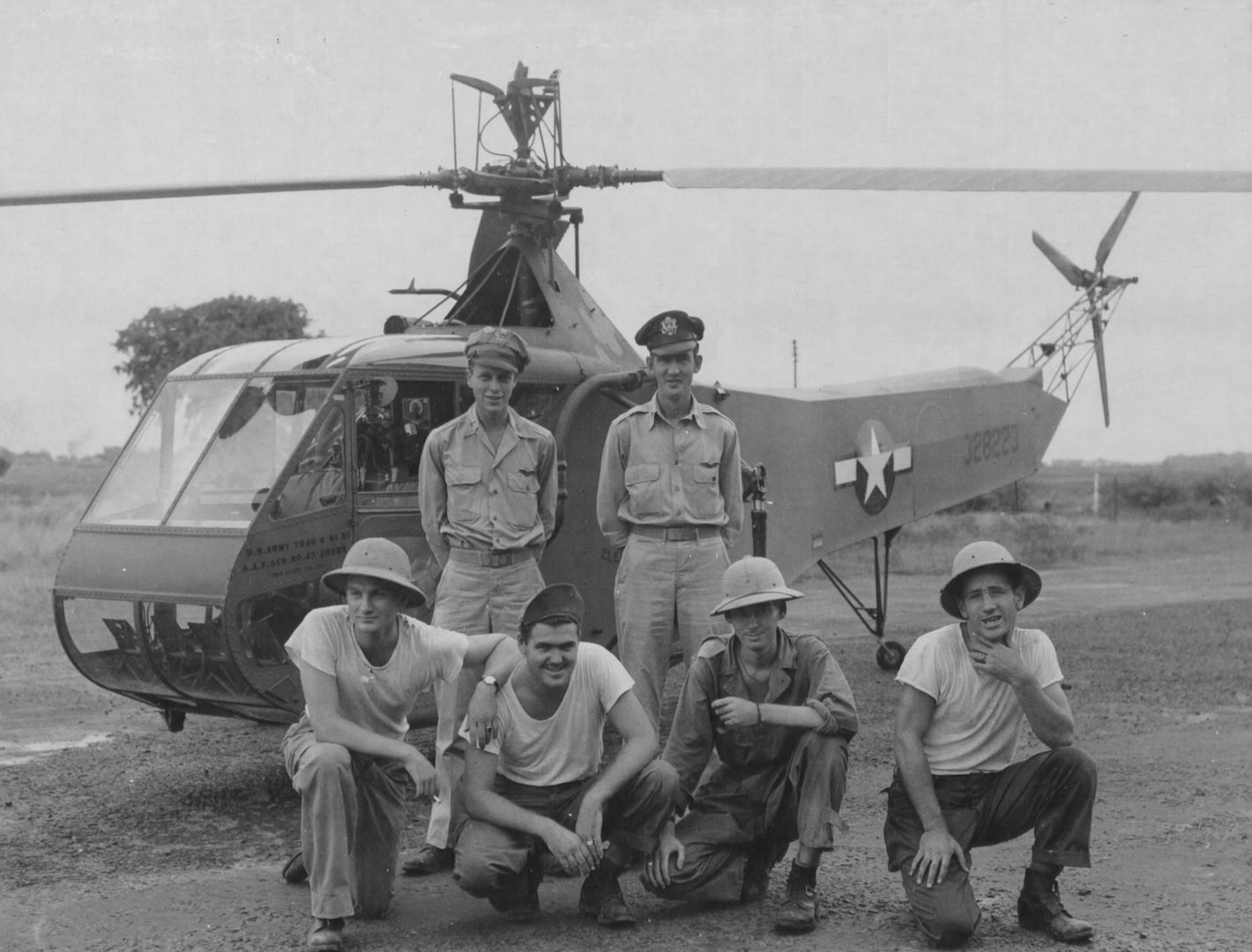
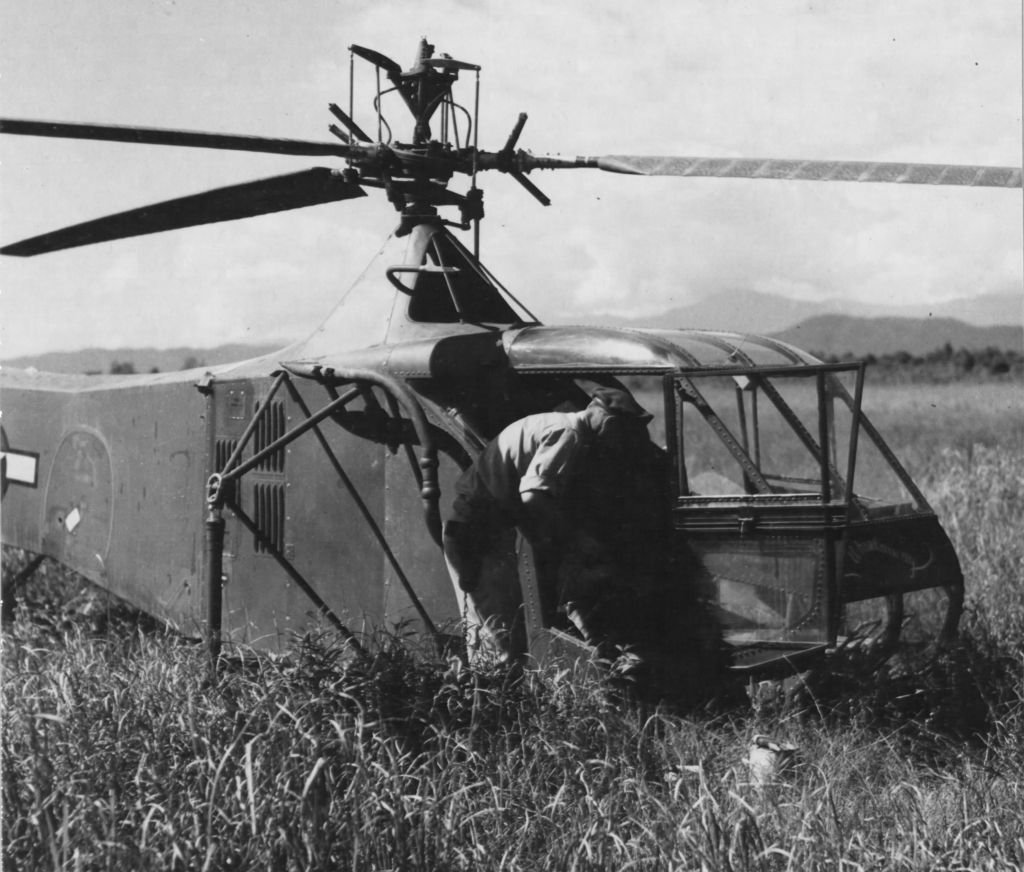
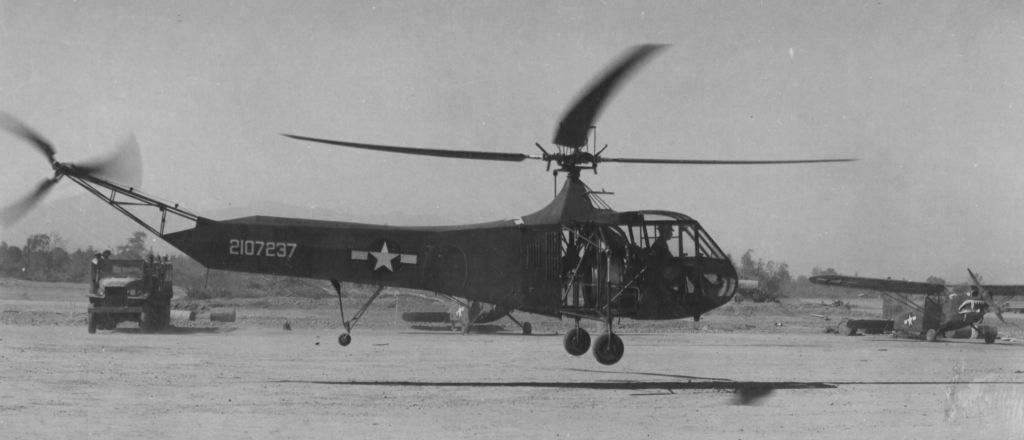
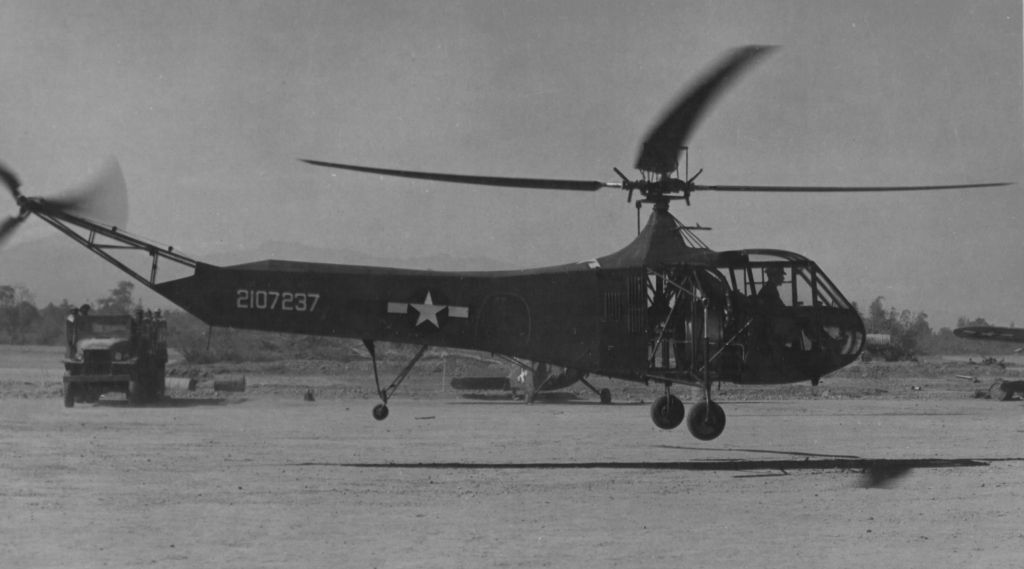
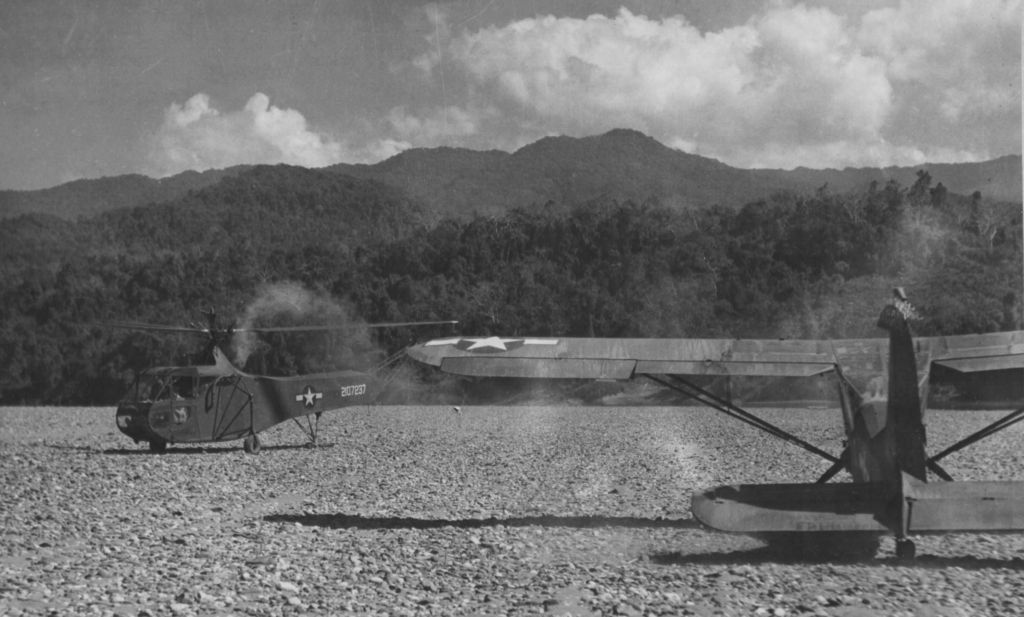

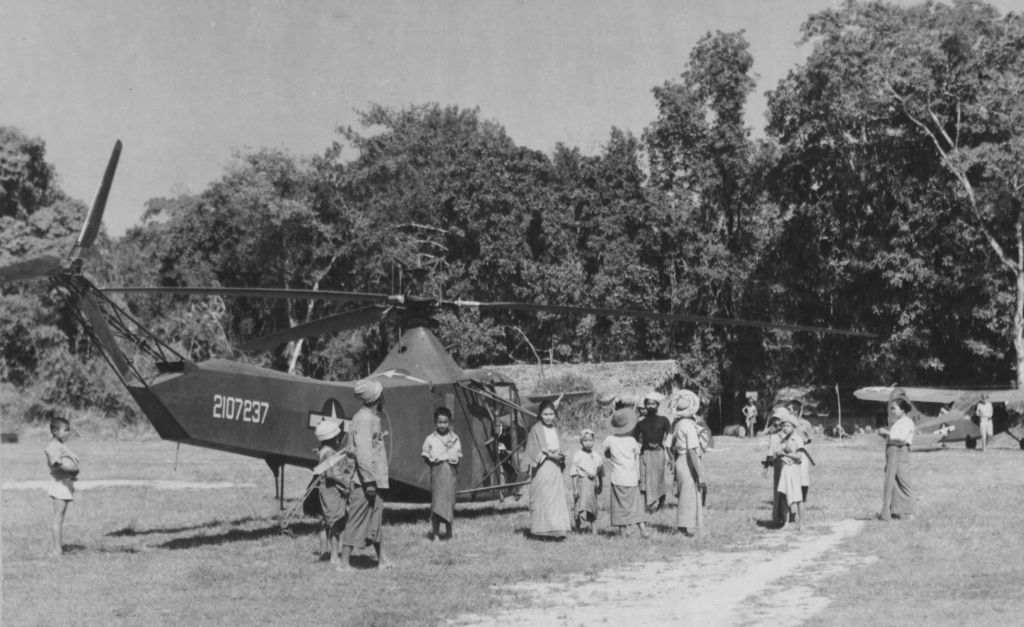
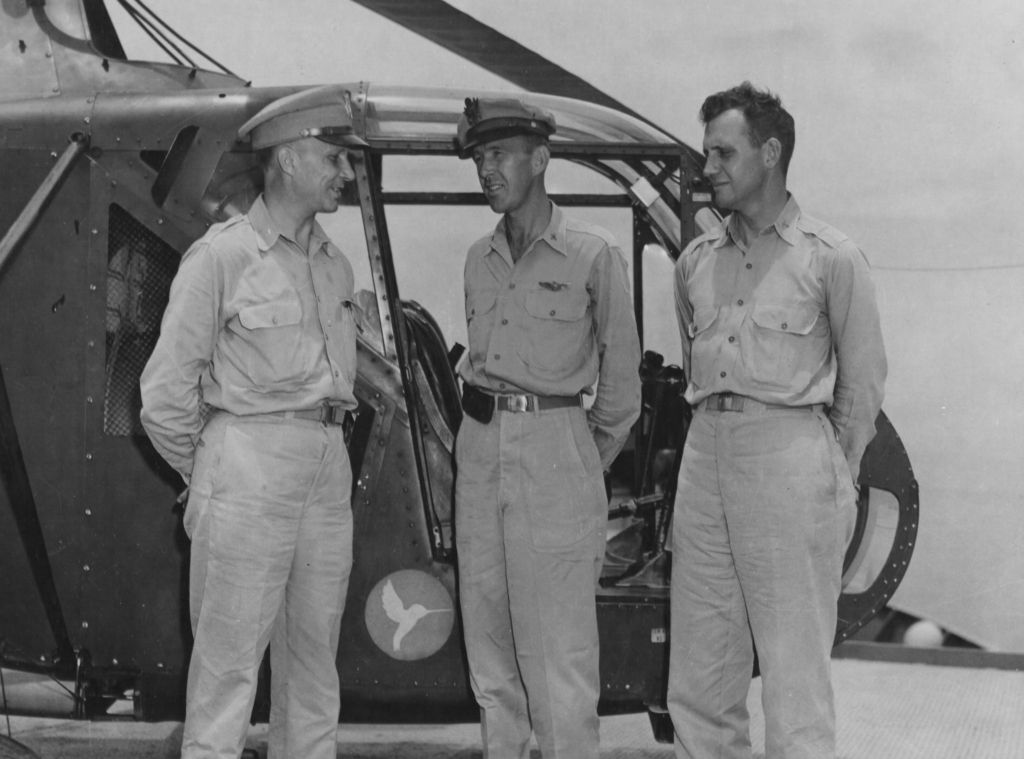
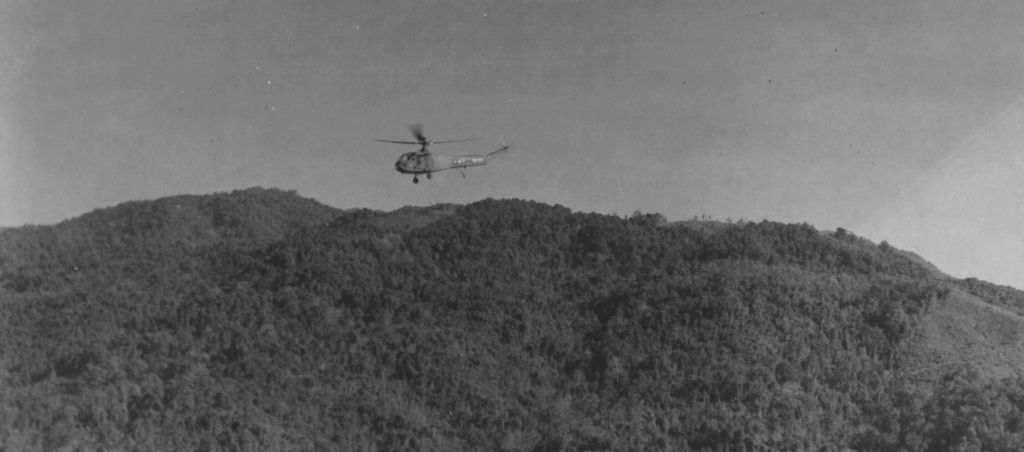
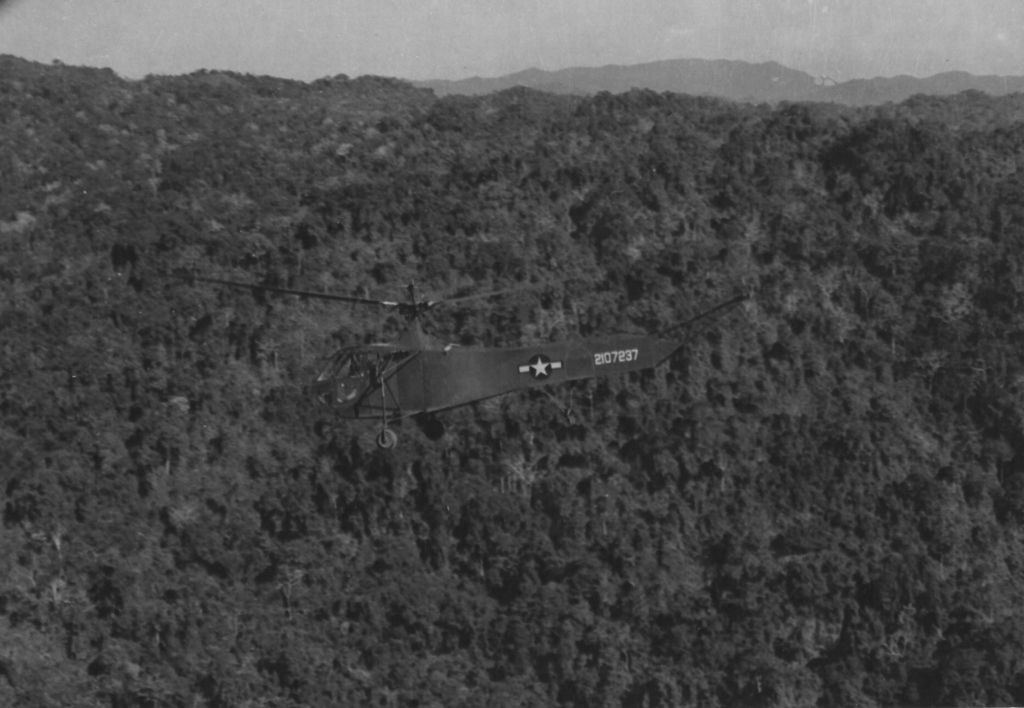
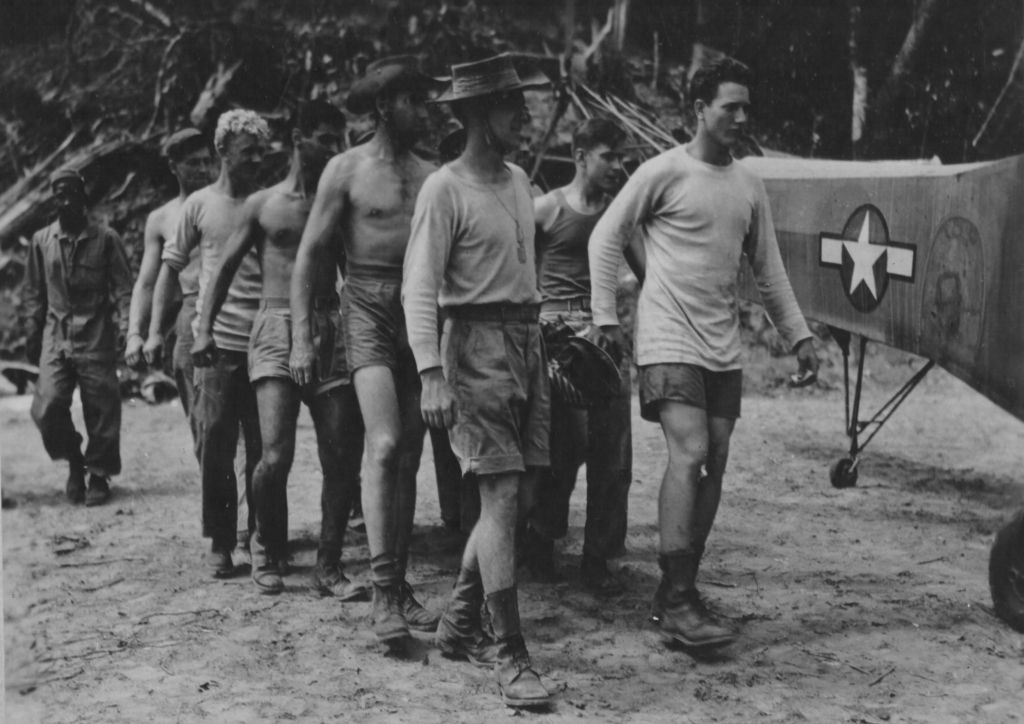
Pacific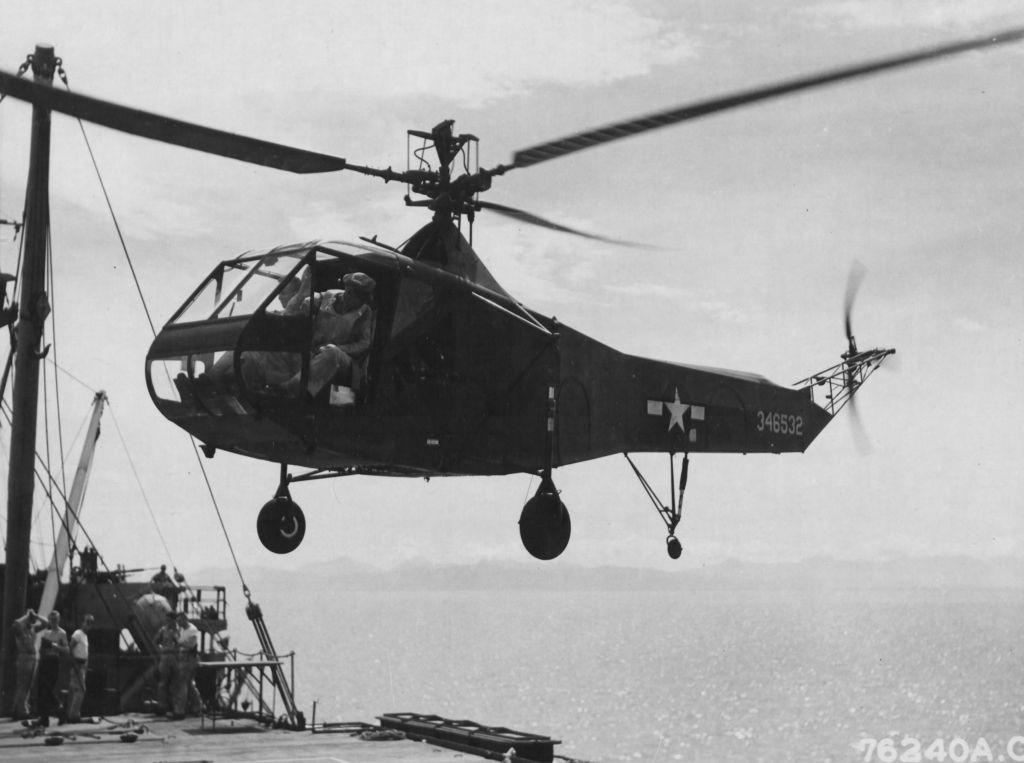
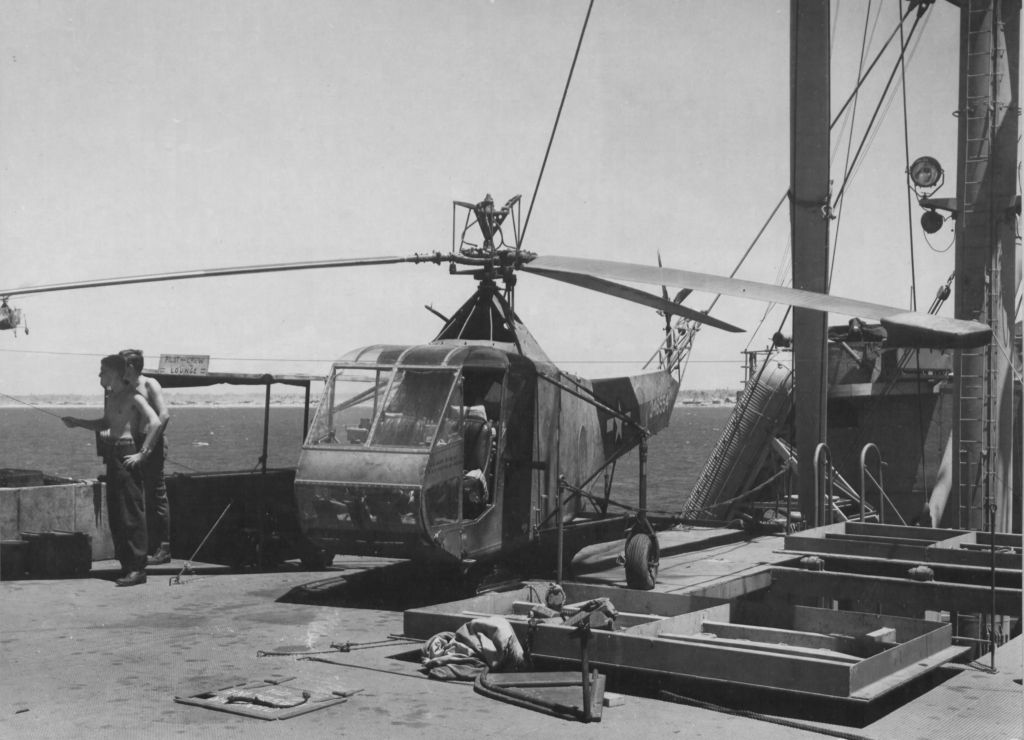
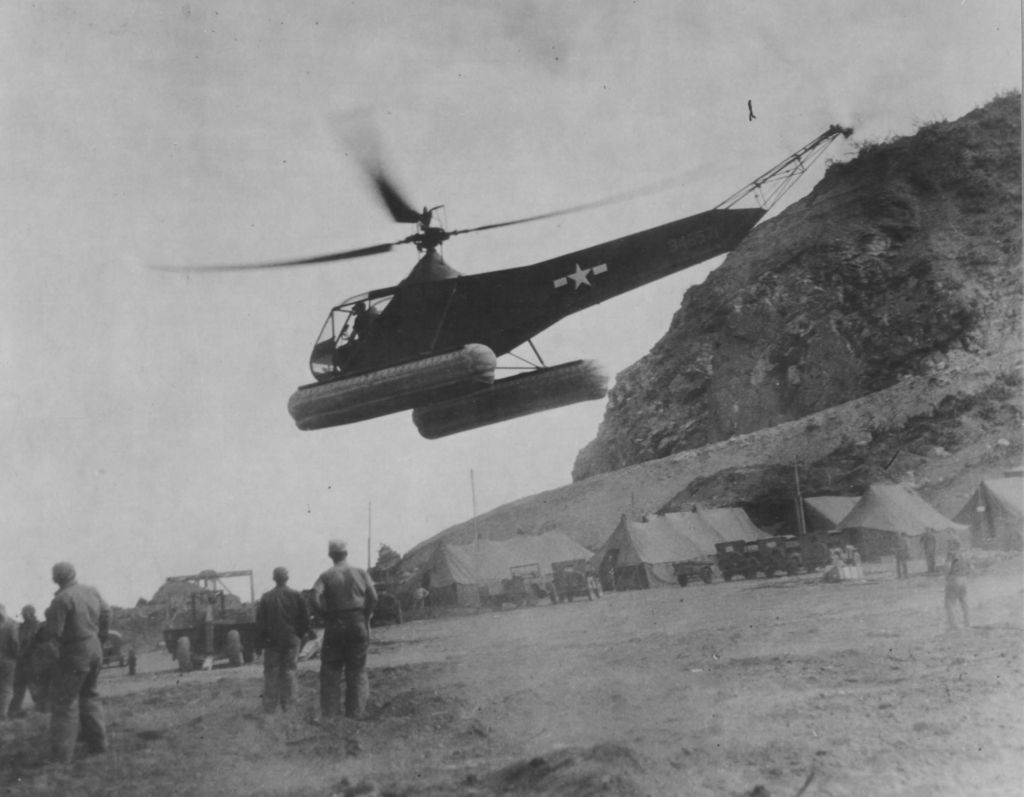
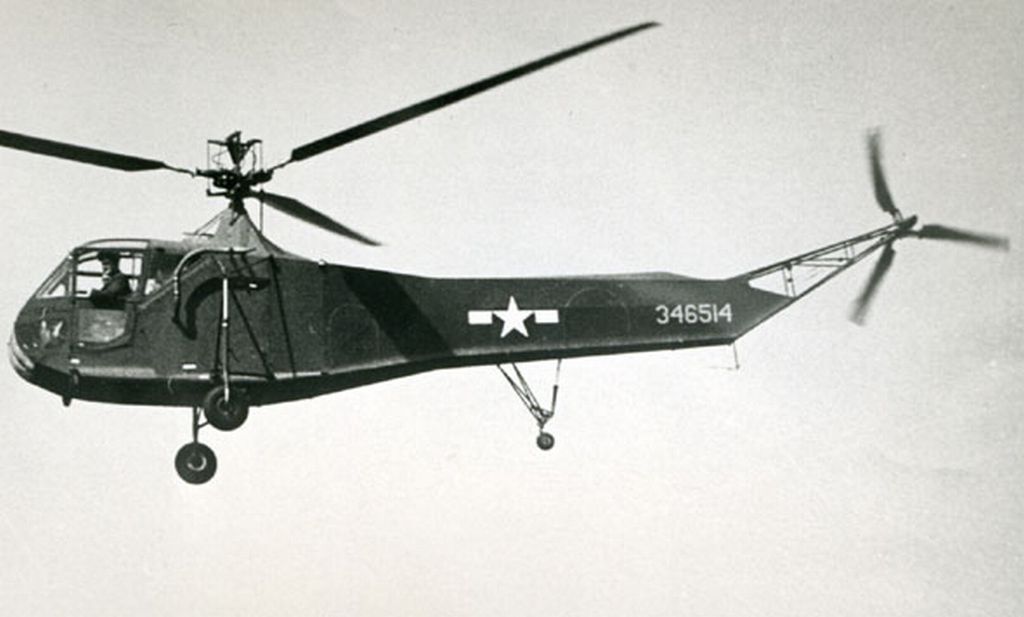
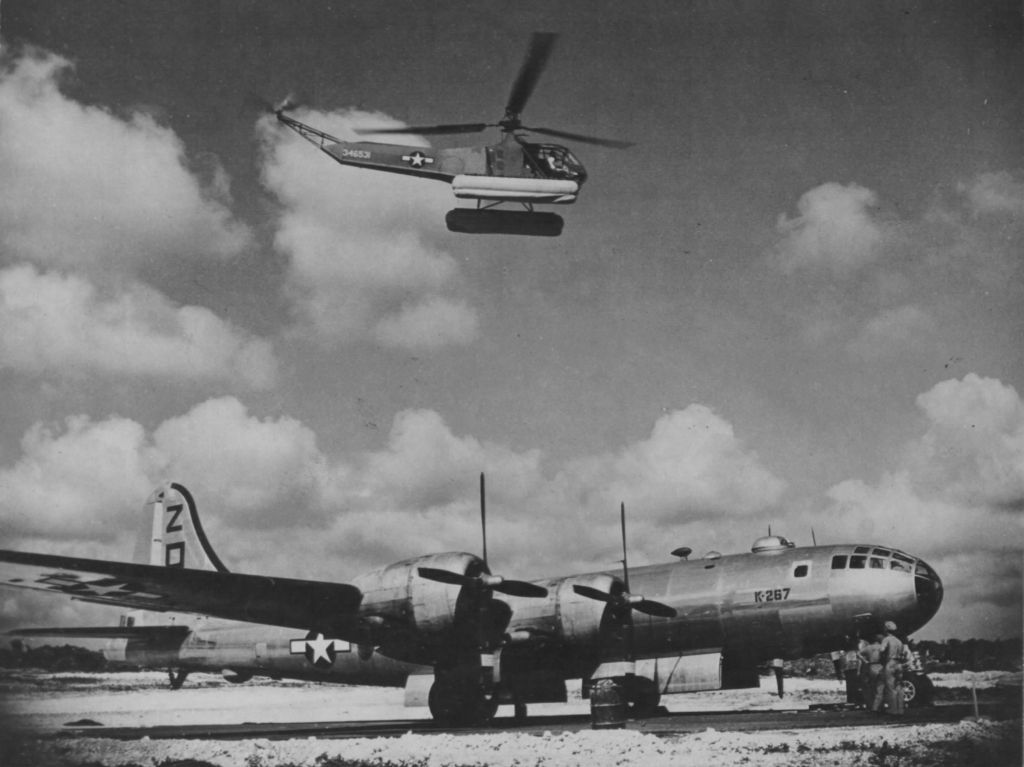
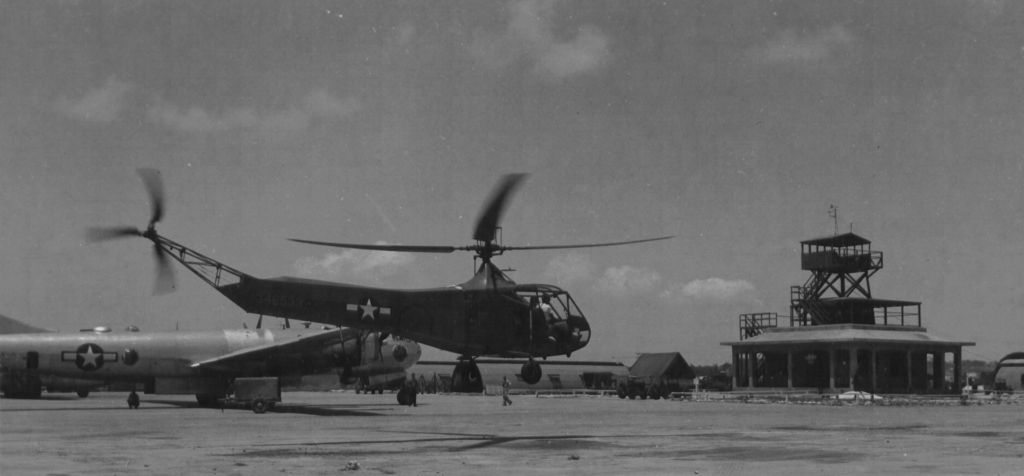
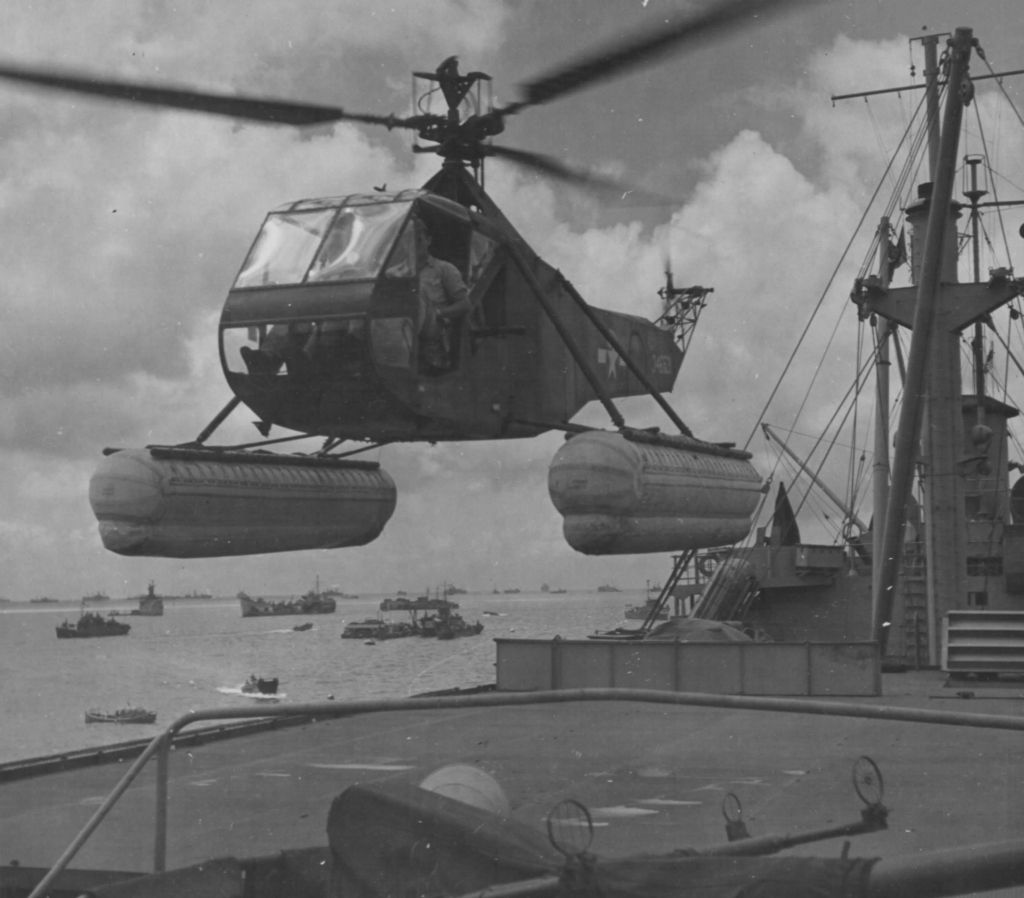
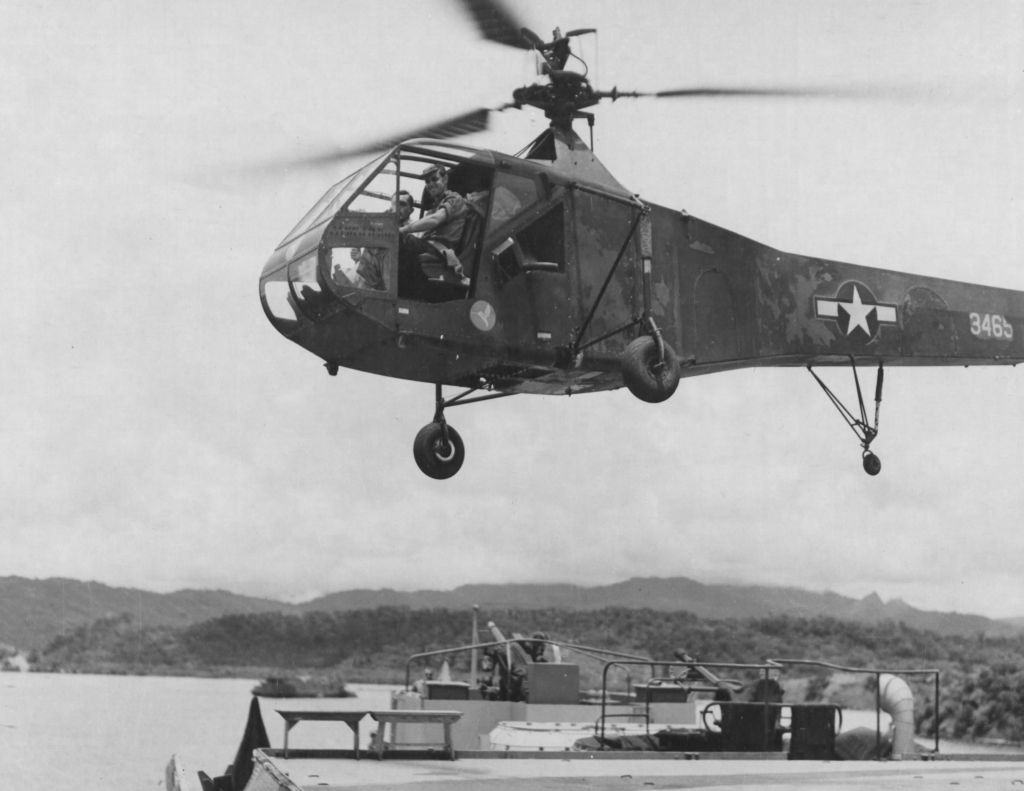




SIKORSKY R-4B:
_____________________ _________________ _______________________
spec metric english
_____________________ _________________ _______________________
rotor width 11.6 meters 38 feet
fuselage length 10.8 meters 35 feet 5 inches
height 3.78 meters 12 feet 5 inches
empty weight 916 kilograms 2,020 pounds
max loaded weight 1,150 kilograms 2,535 pounds
maximum speed 132 KPH 82 MPH / 71 KT
service ceiling 2,440 meters 8,000 feet
range 209 kilometers 130 MI / 113 NMI
_____________________ _________________ _______________________
Regards Duggy
-
 Level 1Now that truly is Aviation history.Isn't it
Level 1Now that truly is Aviation history.Isn't it
Post a reply
- Go to Previous topic
- Go to Next topic
- Go to Welcome
- Go to Introduce Yourself
- Go to General Discussion
- Go to Screenshots, Images and Videos
- Go to Off topic
- Go to Works in Progress
- Go to Skinning Tips / Tutorials
- Go to Skin Requests
- Go to IJAAF Library
- Go to Luftwaffe Library
- Go to RAF Library
- Go to USAAF / USN Library
- Go to Misc Library
- Go to The Ops Room
- Go to Made in Germany
- Go to Campaigns and Missions
- Go to Works in Progress
- Go to Juri's Air-Raid Shelter
- Go to Campaigns and Missions
- Go to Works in Progress
- Go to Skinpacks
- Go to External Projects Discussion
- Go to Books & Resources
